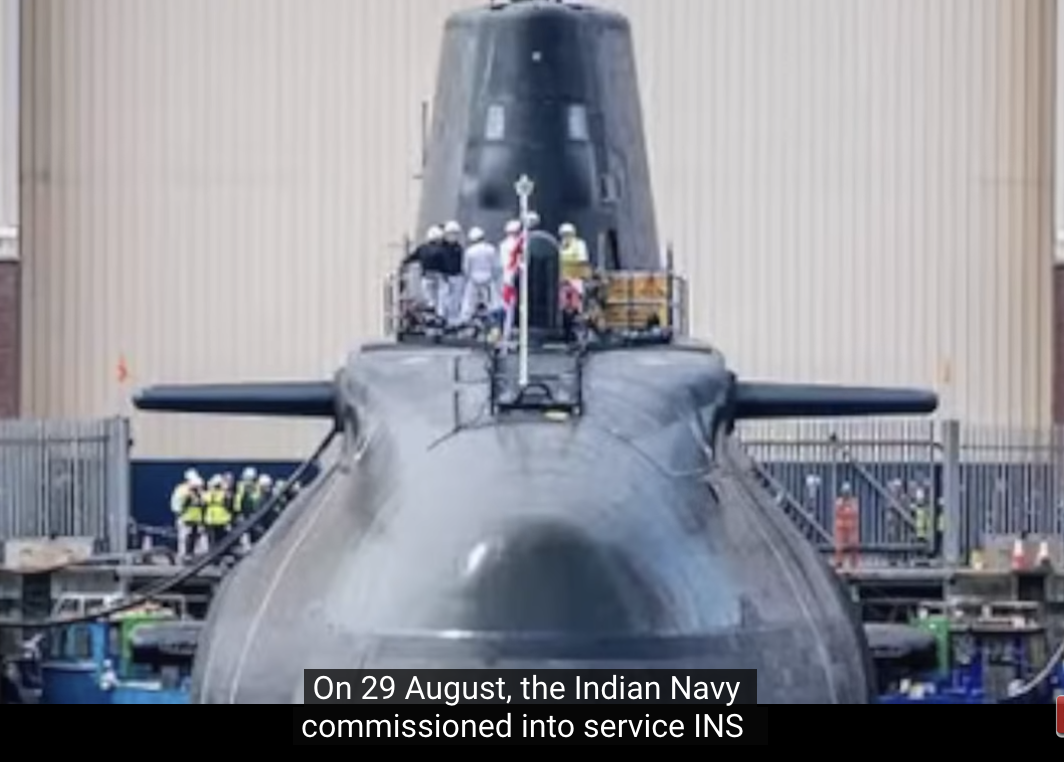India’s New Submarine Strengthens ‘No First Use’ Doctrine
A nuclear ‘no first use’ doctrine implies that a state does not adhere to using its nuclear weapons first. The state would rather wait for the adversary to use them against the state in order to respond with nuclear weapons against the adversary.
While such doctrines could ensure strategic stability by lowering the nuclear threshold, they require adequate planning and most importantly, a credible nuclear force. Credibility does not only rely on possessing weapons systems, but also rely on making them survivable.
One of the best modes of nuclear weapons survivability has been submarine launched nuclear weapons. Submarines can remain submerged under sea for months and longer range missile capabilities on them would negate the need for such capabilities to be close to adversaries’ targets and hence, such submarines could work with stand-off capability.
India’s ‘no-first use’ nuclear doctrine commands for a survivable nuclear force that could compliment its strategy of ‘punitive retaliation’ mentioned in its nuclear doctrine. Under its Advanced technology Vessel (ATV) project, India focused on sea-based nuclear deterrence technology to strengthen its ‘credible minimum deterrence’ posture. A ‘credible minimum deterrence’ posture focuses less on quantity of nuclear weapons and relies more on qualitative improvements in nuclear forces through changes in doctrines, policies and strategies and developing capabilities to suit these implementations.
In August 2024, India reportedly commissioned its second INS Arighaat Ship, Submersible, Ballistic Nuclear (SSBN). In 2018, India’s first SSBN, INS Arihant was commissioned into the Indian Navy. India is expected to have more SSBN fleet in its nuclear arsenal for credible nuclear deterrence. INS Aridhaman being one of them that will be larger than the INS Arighaat and hence, can carry more long range missile systems. This SSBN is expected to be commissioned next year in 2025. These positive developments could strengthen India’s nuclear deterrence in its immediate neighbourhood.
However, developing SSBNs alone for credible deterrence does not resolve the complexities of sea-based deterrence.
SSBNs would need to be accompanied by smaller submarines that could be either conventionally powered or nuclear powered as a ‘defence by denial’ shield for SSBNs.
India is reported to focus on nuclear attack submarines (SSNs) in order to make sea-based deterrence more potent and lethal. This potency and lethality in sea-based deterrence is crucial for states having ‘no-first use’ nuclear doctrine. The submarines may be vulnerable to adversaries’ anti-submarine warfare systems and hence, attack submarines strengthen deterrence through a ‘deterrence by punishment’ strategy. In addition to SSNs, India is also having diesel-electric attack submarines.
Air independent propulsion (AIPs) systems are also a major focus for improving the survivability options of attack submarines once they are operational by reducing the need for periodic surfacing of the submarine that is necessary for atmospheric oxygen for fuel burning and generating electricity to recharge batteries. AIPs on attack submarines along with SSBNs would considerably strengthen the credibility of India’s sea-based nuclear deterrence.
The strategic deterrence that is strengthened with SSBNs is not a possibility without credible delivery systems. In fact, India’s nuclear triad that includes the three legs of nuclear deterrence: land-based, aerial and sea-based is not only reliant on the delivery platform, but also on the delivery systems.
Hence, India’s K-family of submarine launched ballistic missiles (SLBMs) would compliment these SSBNs with their accuracy and long range strike capability. Given that India’s land-based long range ballistic missile, Agni-V would be capable of carrying multiple independently targetable re-entry vehicles (MIRVs), its SLBMs too would be MIRV-ed to evade adversaries’ missile defence capabilities. Fitting MIRVs on these missiles may not be technologically challenging as the missiles are lighter and more compact. The missile also has stealth features to counter adversaries’ missile defence capabilities. India’s SLBM capabilities could range from 750kms to 3500kms and even beyond.
Similarly, for attack submarines, India has progressed with submarine launched cruise missiles (SLCMs) of variants Land Attack Cruise Missiles (LACMs) and Anti-Ship Cruise Missiles (ASCMs). These missiles will have greater maneuverability, compact designs, enhanced stealth, warhead flexibility and high speed performance.
A state with naval power always aspires to become a blue water capability.
However, blue water capabilities could only be achieved when a state is able to ensure its conventional and nuclear deterrence for a longer period of time by exerting longer operational time at sea. SSBNs would provide a fillip to India’s maritime dominance in the IOR and may be also beyond in the near future.
Recently, there were also reports that India has retired its Dhanush nuclear capable sea-launched ballistic missiles. If such reports hold true, then it is obvious that India is moving towards achieving longer range capabilities for sea-based nuclear deterrence that is more survivable and also attach strategic value to them rather than tactical value.
As India progresses towards becoming a maritime power, such ambitions could only be realized when credible naval weapon systems and delivery platforms to fire such weapons systems exist.

